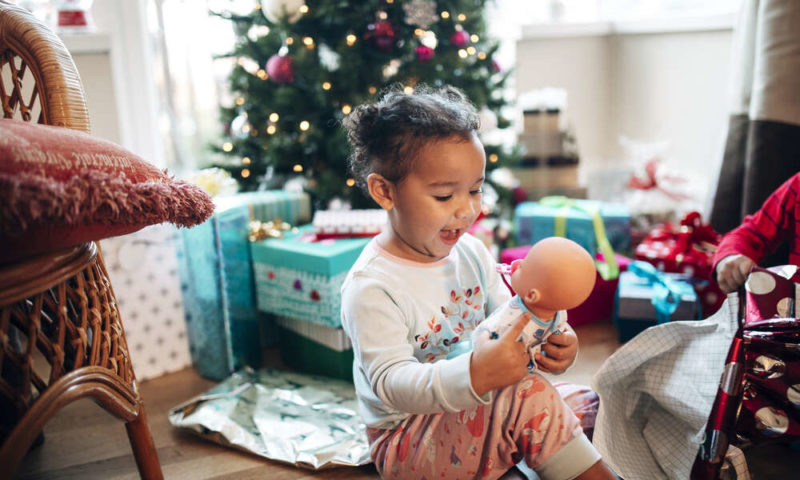
The Toy Industry’s Stocking Stuffer This Year? An Effective Strategy Against Counterfeiting
The Toy Association, like many trade groups, is working to fight counterfeit goods. Emphasizing safety in its messaging has helped the association make strides on a challenging issue.
Amid the holidays, with the backdrop of a shifting economy, you might have found something hiding out among the listings on shopping sites such as eBay and Amazon Marketplace: goods that look like the real thing, but aren’t.
Counterfeit listings have become more problematic for consumers and businesses alike. But for many organizations, messaging around it has been a challenge—in no small part because many consumers are willing to purchase knockoffs. But The Toy Association has found an increasingly effective messaging strategy to highlight the risks of knockoff toys: They are often unsafe, using problematic materials such as lead paint, and can present a major risk to consumers.
Steve Pasierb, president and CEO of The Toy Association, said that counterfeiting has become significant enough that it’s a major focus of the trade group these days.
“It’s gone from something that was in the mix for our external affairs group to something that’s clear in our strategic plan,” he said. “So it’s an association policy or priority, if you will.”
This increased focus has led to a tactical shift around how knockoffs are framed. Here are a few lessons the group has learned along the way:
1. Develop a broad strategy with room for all stakeholders.
Pasierb says that the group built a strategy around three groups of stakeholders: consumers, industry players, and legislators.
From there, the organization developed tactics to manage each group, including white papers, webinars, policy statements, industry partnerships, and consumer research. What makes this approach successful, said Pasierb, is close internal collaboration among departments, especially advocacy and communications teams.
“In addition to being a year-round strategic priority, it’s the active collaboration between our external affairs and communications teams together with our members on the [intellectual property] committees that makes this work,” Pasierb added.
2. Focus on the effect on consumers, not the cost to businesses.
Pasierb noted that, while the rise of counterfeiting financially harms many types of businesses, including toy manufacturers, portraying the issue as a financial one simply doesn’t work.
“We don’t make it about the money that companies are losing, ’cause nobody cares,” he said. “Consumers don’t care if a massive corporation loses money; what they care about is their product.”
Instead, the association has leaned on the products’ safety risks. It’s a strategy particularly suited to toys, as Pasierb pointed out by comparing toys with counterfeit handbags purchased online. “It isn’t that great, you’re disappointed, but you’ve got a Googled thing that looks like a Gucci handbag that costs 20 bucks,” he said.
By contrast, counterfeit toys can be unsafe for children.
It’s gone from something that was in the mix for our external affairs group to something that’s clear in our strategic plan.
Steve Pasierb, president and CEO of The Toy Association
“It could have lead paint, it could have sharp edges,” he said. “It could have small parts a child could swallow. It’s a health and safety risk. It’s not just cheap; it’s dangerous.”
As a result, The Toy Association led with safety in its consumer outreach, including through its Toy Safety Awareness Month, which launched its first iteration in November and is likely to be repeated next year.
3. Find strong external partners, even if they seem like odd bedfellows.
As counterfeiting affects many types of manufacturers, Pasierb said that his group often collaborates with other associations dealing with the same issue. It’s worked with the American Apparel & Footwear Association and the National Retail Federation, as well as Michigan State University, which helps produce research for The Toy Association through its Center for Anti-Counterfeiting and Product Protection.
“It’s everybody’s problem—it just has a different blush to it, depending on the industry,” he said.
The safety angle has also helped to create alliances in places they might not have appeared in the past. The Public Interest Research Group, which has put out an annual list of the most dangerous toys for more than 35 years, has traditionally found itself at odds with The Toy Association over the report. But the nature of counterfeit toys, combined with a growing line of dialogue between the two groups, led The Toy Association to stand with PIRG at its annual Trouble in Toyland press conference this year.
“So what were traditionally enemies found that ground where our combined message was more powerful than either one of us alone or either of us fighting each other,” Pasierb said.
4. Lean into the happy accidents.
At times, the group’s consumer focus has seen messages land in areas the association wasn’t anticipating. One such place is Playsafe.org, the association’s consumer-targeted website that highlights the safety issues of counterfeit toys.
Despite being intended for consumers, it’s proved a valuable resource for media outlets. It’s an unexpected benefit because the media has at times grouped non-toy items with known risk— such as hoverboards and fidget spinners—with toys, creating a challenge for the association.
“So that’s kind of a surprise that some of the things we’ve done for consumers have really benefited the media, and then helped shape the story,” he said.
(SolStock/E+/Getty Images Plus)






Comments